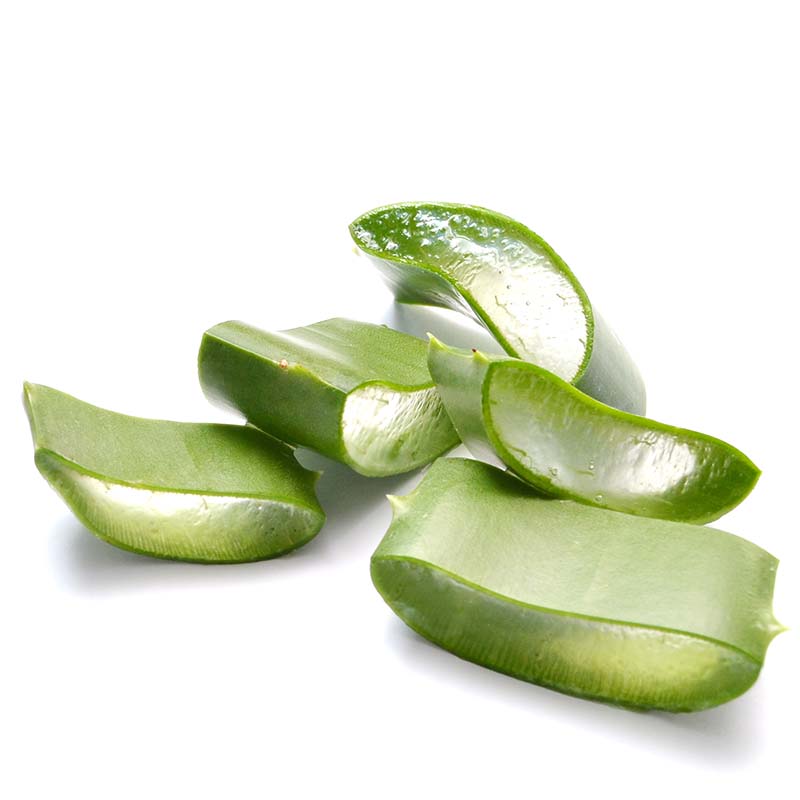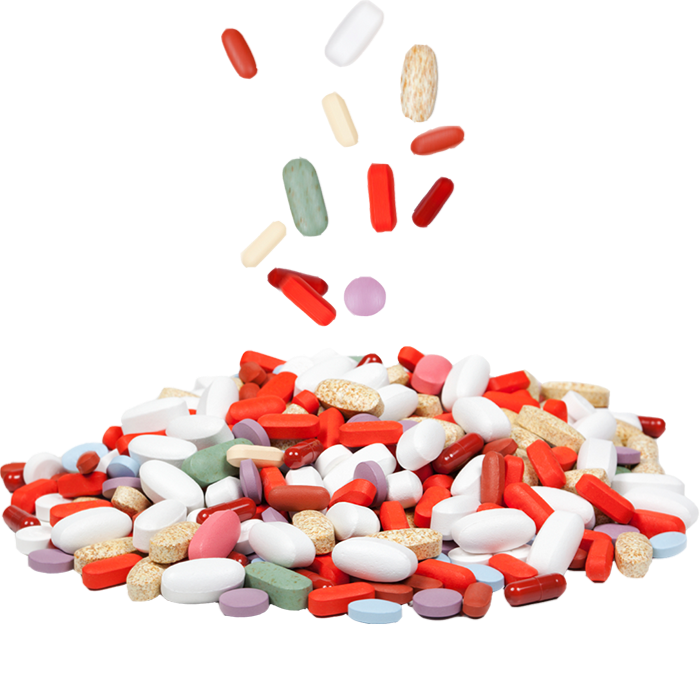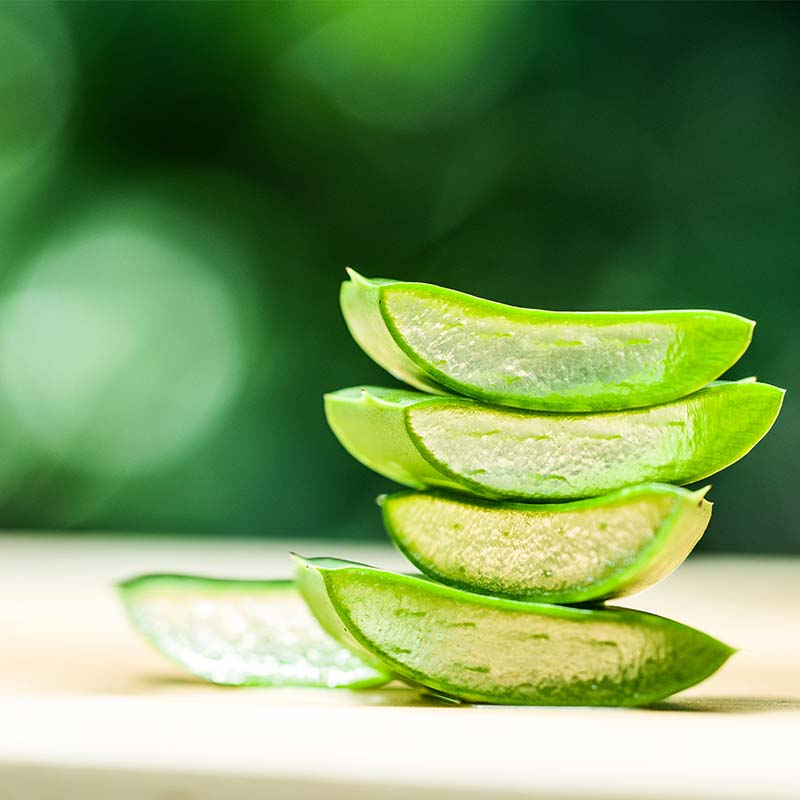Polysaccharides and Its Benefits
Polysaccharides, responsible for the
biological activities of Aloe Vera
Polysaccharides, responsible for the
biological activities of Aloe Vera
Aloe is a rich source of polysaccharides; polysaccharides present in the Aloe have a unique ability to adhere to the outer cell membranes, improving the natural permeability. In this way, Aloe enhances the supply of nutrients and oxygen to the cells and the transport of metabolic waste. Find cellulite cream or lotion; usually, they can help Aloe soothes the skin, hydrates it, nourishes it, and accelerates the regeneration of new skin tissue. Aloe seems to increase penetration of drugs as it penetrates very deeply into the deep layers of the epidermis, regulates the acid-alkaline PH levels of the skin, inhibits the multiplication of bacteria, viruses, and fungi, relieves pain and itching, moisturizes the skin, dilates blood vessels under the skin and accelerates the blood circulation, stimulates cell division and accelerates tissue regeneration. Aloe Vera consists primarily of water and polysaccharides (pectins, hemicelluloses, glucomannan, acemannan, and mannose derivatives). Mannose 6-phosphate is a major sugar component.
Furthermore, acemannan is a complex carbohydrate isolated from Aloe and has been shown to accelerate wound healing and reduce radiation-induced skin reactions. Acemannan is a potent macrophage activating agent and, therefore, may stimulate the release of fibrogenic cytokines. Also, growth factors may directly bind to acemannan, promoting their stability and prolonging granulation tissue stimulation. Polysaccharides are known scientifically to boost your brainpower, improve your digestion and moods, and maximize your immunity. Polysaccharides seem to be essential to the needs of every cell in the body. Increasing your consumption of them through diet and supplementation could restore health in a short time.
These polysaccharides do in our bodies a complicated process that leads to a cell to cell communication. It means that communication inside our bodies between cells is as significant to our well-being. Polysaccharides provide building blocks needed to assemble healthy cells and enable these glycoforms to create proper cellular communication.
To preserve bioactive components of natural extracts, AMB Wellness ensures that the functionalities of Aloe Vera will also be found in the final products. Through a highly effective technique we have in AMB Wellness, we can remove several of the Heavy Metals found in Aloe, including Lead, Cadmium, Arsenic, etc.
Besides the Active compounds that Aloe provides, others are regulated by health institutions worldwide. One of them is Arsenic, which is a naturally occurring element found in Aloe, and must be removed if the concentration is high as it is considered that the effects and exposure on humans are considered not suitable for human health. The FDA and the EFSA monitor and regulates levels of Arsenic in certain foods because it can cause severe and life-threatening health problems. It also monitors arsenic levels in dietary supplements and cosmetics. Therefore, we have adapted our process to offer the lowest level possible of these components without interfering with the Aloe’s natural composition. AMB currently provides less than 1 ppm.
AMB Wellness products are 100% of the Natural Ingredient.
As you know, the large molecules of the active’s compounds are difficult to analyze by chromatographic techniques commonly used in analytical laboratories. They, therefore, are often measured using unspecific methods such as spectrophotometry or conductivity. In the Aloe Vera World, some suppliers might have taken advantage of these non-specific test methods to substitute or dilute the aloe polysaccharides with lower-cost carbohydrates such as maltodextrin or sucrose.
Many experts in the herbal industry have known for a long time that some aloe materials are adulterated because they are in liquid or gel form. It is relatively easy for unethical aloe producers to ‘stretch’ the aloe material by adding low-cost liquids and various sugars (carbohydrates) to the ingredients to increase profits.

We do not feel competitive with countries as China, India, and some of the U.S., which are known to offer lower-quality products. We instead give more weight to the quality and keep the brand as the right quality product. It will lead us to get demanding customers that recognize the quality of products.
Our product’s work is much more than just an Aloe Vera material; we offer quality, service, experience, partnership, development ideas, and responsibility. Please be confident that you are getting the best product for a competitive price. One function of epithelial cells is to maintain distinct compartments within the body and act as barriers to separate the body from the external environment. Although molecules can cross the intestinal epithelium by three main pathways, namely transcellular passive diffusion, paracellular passive diffusion, and carrier-mediated transport, many useful drugs exhibit low absorption after oral administration.

Low drug absorption across the intestinal epithelium is in many cases attributed to unfavorable physicochemical properties of the drug molecule, such as hydrophilicity and a large molecular weight. The intestinal absorption of these drugs can be increased by different techniques such as co-administration of absorption enhancing agents. Absorption enhancing agents may facilitate the absorption of poorly absorbable drugs by different mechanisms such as opening tight junctions or changing the membrane structure, or targeting transporter proteins. Only limited information is currently available on the drug absorption enhancement activities of Aloe vera gel. Still, if it is proven to be a safe and effective absorption enhancer in vivo, it could be used in novel dosage forms for the oral delivery of poorly absorbable drugs administered employing injections.
Aloe Vera Monosaccharides and Polysaccharides
Monosaccharides and polysaccharides have anti-inflammatory, antibacterial, antiviral, anti-mycotic, and immune-stimulating effects. These properties enhance digestion, bind numerous detrimental substances such as cholesterol and gall acid. Most importantly are the long-chain sugars (especially the polymannan sugars), which enter the intestinal wall undegraded and then have an immune regulating effect in the blood. On the other hand, they stick to the intestinal wall and prevent undesired substances from entering the bloodstream.
The most important ingredient is acemannan, which cannot be produced by adults. It supports the immune system, is anti-inflammatory, and bolsters the digestive system’s absorption of vital substances. The following substances belonging to this group were found in Aloe Vera Gel: Acemannan, aldopentose, arabinose, cellulose, galactose, galacturonic acid, glucuronic acid, glucose, hexanoic acid, mannose, mannuronic acid, pentosan, rhamnose, uronic acid, xylose.
Aloe Vera Polysaccharides enhance any kind of formula.
Polysaccharides, now more commonly called glycosamino-glycans, are a particular form of polysaccharide. They are made in the human body and perform many vital functions in our health, including promoting growth and enhancing the immune system. Unfortunately, after puberty, we cease manufacturing these polysaccharides and must obtain them from outside sources.
Formulate with Aloe Vera to deliver these polysaccharides to your customers. We all know how exhausting it can be living an active, busy lifestyle. Aloe Vera is your solution in nutraceutical ingredients to boost your vitality due it is very rich in various nutrients. These nutrients help Aloe Vera nourish and enhance immunity.

Aloe Vera is nutrient-dense, meaning they contain a broad-spectrum of synergistic concentrated useful macro and micronutrients that help or enhance the body’s abilities to generate healthy cells and maintain optimum operational performance. Aloe is an excellent carrier increasing the bioavailability of other compounds. Aloe’s extraordinary success as a commodity for use in nutritional foods and cosmetics is due to the proper stabilizing procedures that enable processors to store and ship the Aloe Gel without fear of spoilage throughout the world. Aloe provides a unique form of low molecular weight polysaccharides; as we age, our bodies produce less and less energy and fill with stress, and have a low defense in the body.
The active polysaccharide fractions in Aloe are called galactomannans or beta-glucomannans. These polysaccharides have been shown in laboratory studies to act as a bridge between foreign proteins (such as virus particles or lignins) and macrophage cells in the human body, facilitating the destruction of the invading protein by the macrophage.

Aloe Vera polysaccharides enhance any kind of formula.
While seemingly widespread and unrelated, these various effects are due to a direct process that occurs at the cell membrane. Aloe is a rich source of polysaccharides and has various carbohydrate constituents, such as polysaccharides, Acemannan, and mannose-6- phosphate mannose-6-phosphate and Acemannan are significant constituents of the carbohydrates of Aloe Vera. Aloe polysaccharides are known scientifically, boost your brainpower, improve your digestion, moods, and maximize your immunity.
Polysaccharides seem to be essential to the needs of every cell in the body. Increasing your consumption of them through diet and supplementation could lead to restored health. What these polysaccharides do in our bodies is a complicated process that leads to cell-to-cell communication. It means that communication inside our bodies between cells is significant to our well-being; Polysaccharides provide building blocks needed to assemble healthy cells and enable these glycoforms to create proper cellular communication. When cellular messages go wrong, then health breaks down, and sickness occurs. Wound healing does not just require immune stimulation by polysaccharides, but Aloe’s healing comes from growth factors, amino acids, glycoproteins, gibberellin, auxin, and minerals zinc as well as polysaccharides. These biologically active agents synergize to give us the synergetic action of Aloe Vera. Polysaccharide with the other bioactive compounds makes major contributions to the biological activity of Aloe Vera.
“disclaimer” that FDA has not evaluated the claim. The disclaimer must also state that the dietary supplement product is not intended to “diagnose, treat, cure or prevent any disease,”because only a drug can legally make such a claim.

